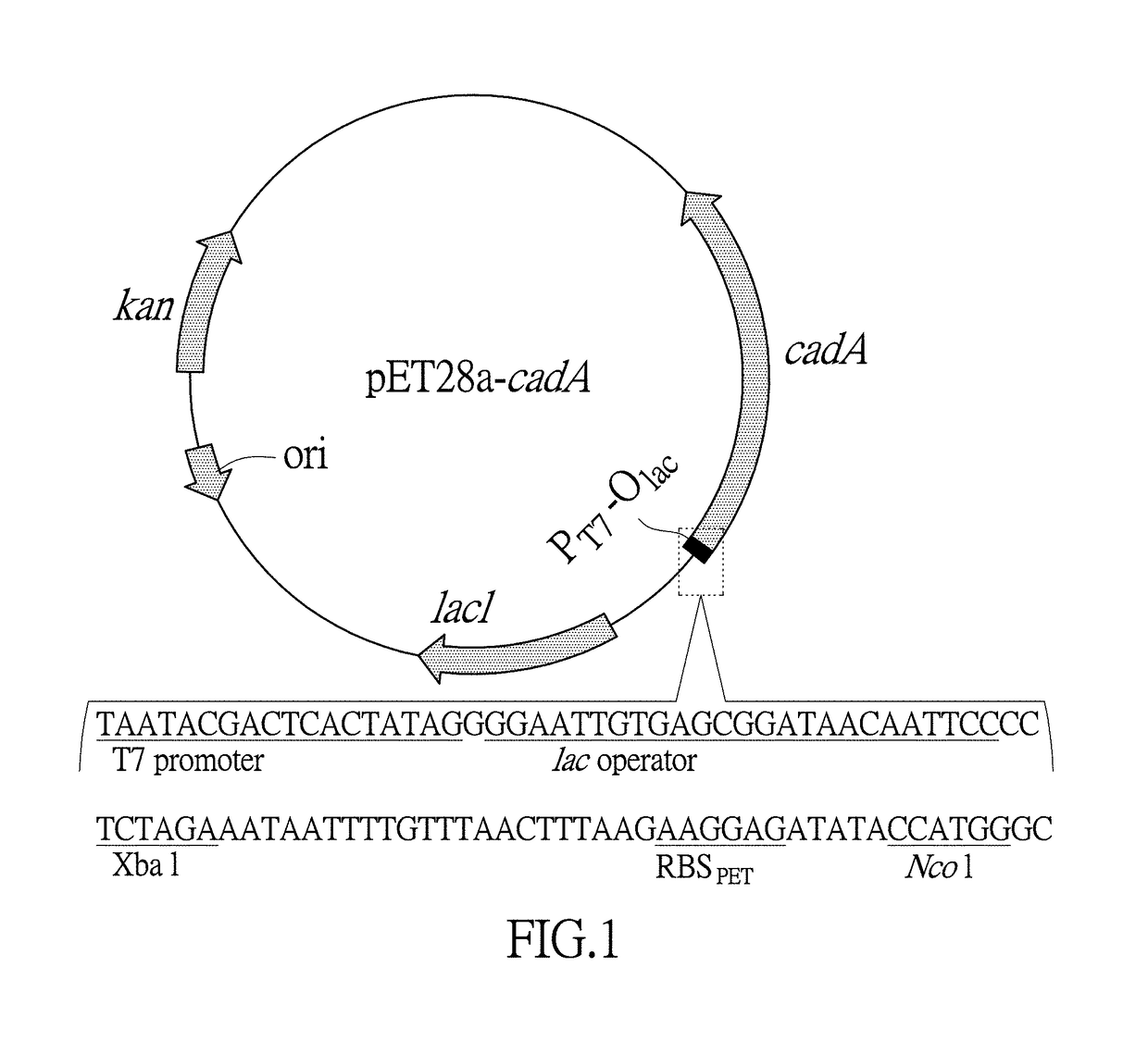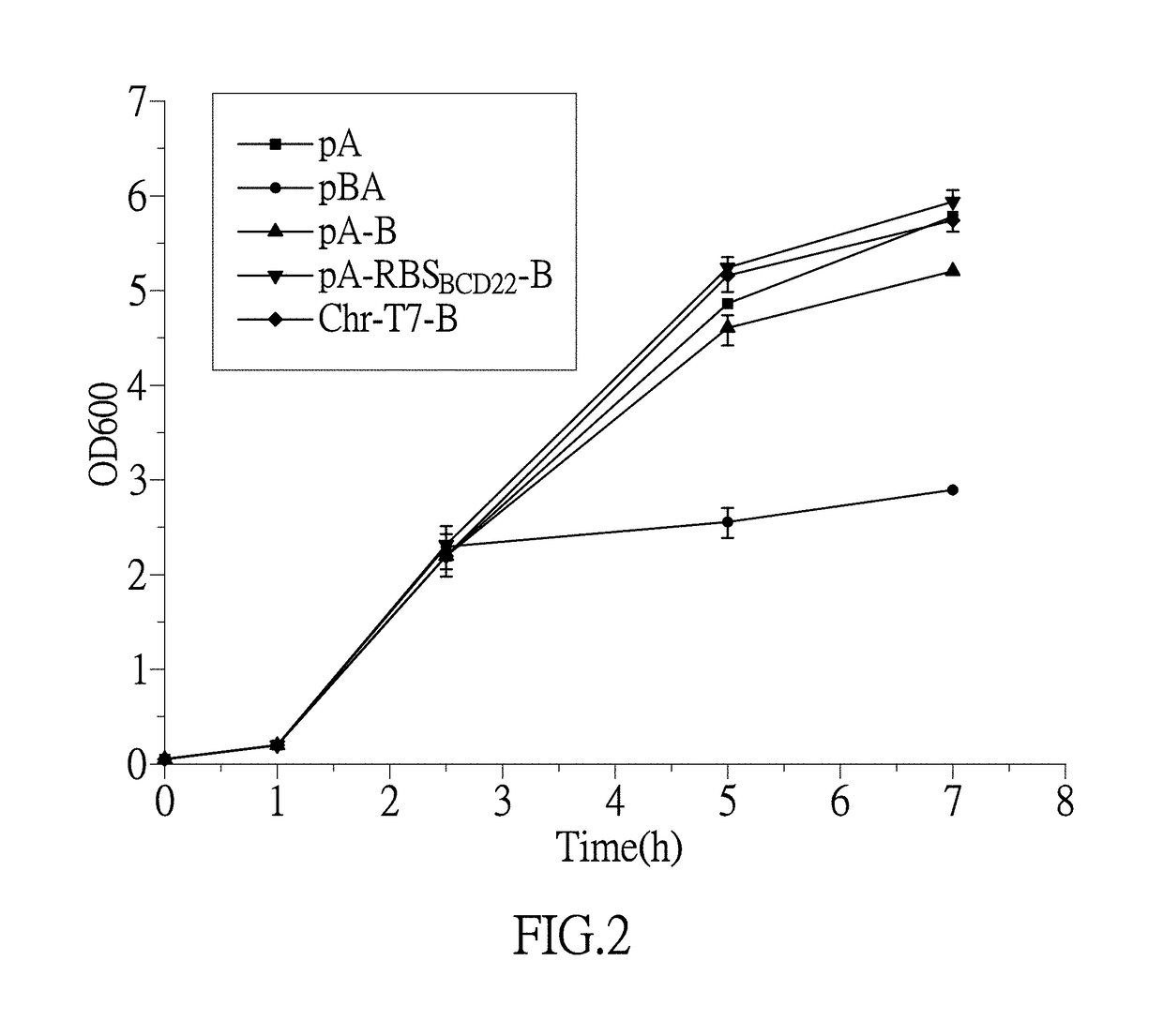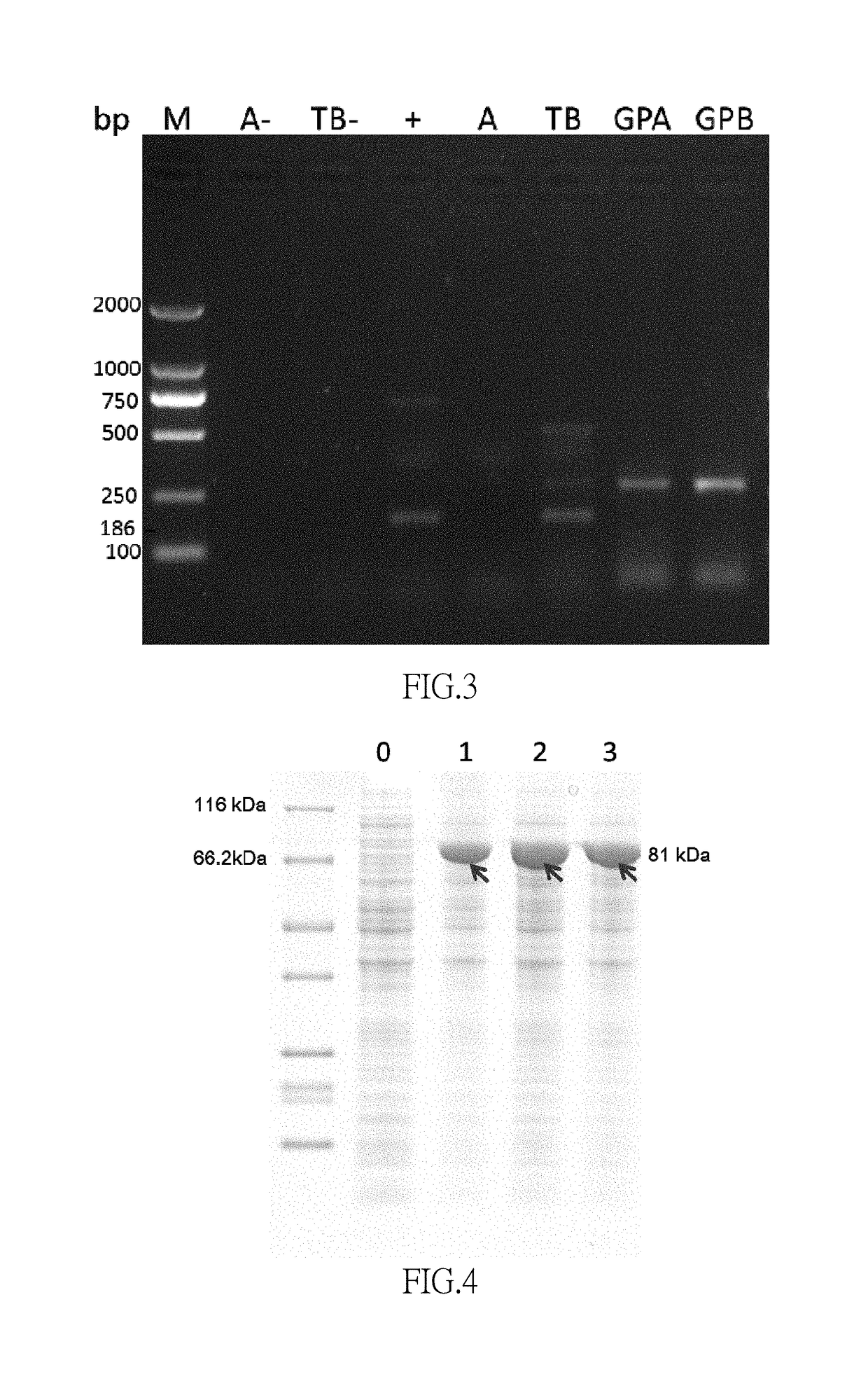E. coli engineering bacteria producing 1,5-pentanediamine through whole cell catalysis and application thereof
a technology of whole cell catalysis and engineering bacteria, which is applied in the direction of lyases, peptides, carbon-carbon lyases, etc., can solve the problems of increasing process difficulty and cost in actual production, requiring a huge consumption of petrochemical resources, and achieving high production intensity, high efficiency protein expression, and significant improvement of catalytic performance of 1,5pentanediamin
- Summary
- Abstract
- Description
- Claims
- Application Information
AI Technical Summary
Benefits of technology
Problems solved by technology
Method used
Image
Examples
embodiment 1
[0099] Determination of 1,5pentanediamine
[0100]A 10 μL sample was added into a 2 mL centrifuge tube containing a 100 μL sodium bicarbonate solution (4.2 g / 100 mL), after mixture, a 200 μL acetonitrile solution containing 1% (volume percentage) 2,4dinitoflruorobenzene (DNFB) was added therein and then mixed. The derivatization reaction was conducted for 60 minutes at 60° C. (the reaction time was controlled strictly. The mixture was slightly shook for 30 minutes after the reaction started for a better mixing, and then the derivatization reaction was continued). Removed the mixture and cooled the mixture to a room temperature in dark, added a 1600 μL acetonitrile, performed a vortex mixing for 30 seconds, and took a 15 μL sample for injection after a filtration through an organic membrane.
[0101]A mobile phase A was 5.4 g / L potassium dihydrogen phosphate solution (pH 7.2), a mobile phase B was 80% (volume percentage) acetonitrile solution, the mobile phases A and B were pumped in at a ...
embodiment 2
[0104] Sequence optimization of lysine decarboxylase gene cadA and construction of expression vector as well as engineering bacteria
[0105](1) Inserting an ORF of an optimized lysine decarboxylase gene cadA behind a T7 promoter and a RBS in an expression vectorpET28a (+). First, according to a recognition sequence feature of a restriction endonuclease Nco I which is behind the RBS in the expression vector pET28a (+), mutating a second codon of the lysine decarboxylase gene cadA to GCA which is the second codon with high frequency of an abundant protein. Second, replacing a subsequent sequence before No. +33 base for a synonymous codon by using rare codons, so as to increase the number of the rare codons in the sequence and then increase a gene expression. RNAfold software (http: / / rna.tbi.univie.ac.at / cgibin / RNAfold.cgi) was further used to predict a minimal free energy of a RNA secondary structure after replacement of No. −4 to +37 base sequences of the lysine decarboxylase gene cadA...
embodiment 3
[0115] Screening the whole cell catalytic performance of E. coli BL21 (DE3) / pET28acadA*
[0116]The above constructed engineering bacteria E. coli BL21 (DE3) / pET28acadA* as well as the control engineering bacteria E. coli BL21 (DE3) / pET28acadA1 and the E. coli BL21 (DE3) / pET28acadA2 stored in freezing tube at −80° C. were inoculated by streaking respectively on the LB culture plates containing 50 mg / L kanamycin, and incubated in the culture incubator at 37° C. for 12 h. The lawn on the culture plate were removed and inoculated in another tube containing 3 mL LB liquid culture media (with 50 mg / L kanamycin), and cultured in the shaking incubator at 37° C. with 200 rpm for 10 h. A 2% (volume ratio) bacteria solution was taken and inoculated into a 500 mL shaking flask with 50 mL LB liquid medium (containing 50 mg / L kanamycin), and cultured in the shaking incubator at 37° C. with 200 rpm. An inducer IPTG at a final concentration of 0.2 mM was added after 2.5 h incubation, and an inducing ...
PUM
| Property | Measurement | Unit |
|---|---|---|
| concentration | aaaaa | aaaaa |
| concentration | aaaaa | aaaaa |
| time | aaaaa | aaaaa |
Abstract
Description
Claims
Application Information
 Login to View More
Login to View More - R&D
- Intellectual Property
- Life Sciences
- Materials
- Tech Scout
- Unparalleled Data Quality
- Higher Quality Content
- 60% Fewer Hallucinations
Browse by: Latest US Patents, China's latest patents, Technical Efficacy Thesaurus, Application Domain, Technology Topic, Popular Technical Reports.
© 2025 PatSnap. All rights reserved.Legal|Privacy policy|Modern Slavery Act Transparency Statement|Sitemap|About US| Contact US: help@patsnap.com



